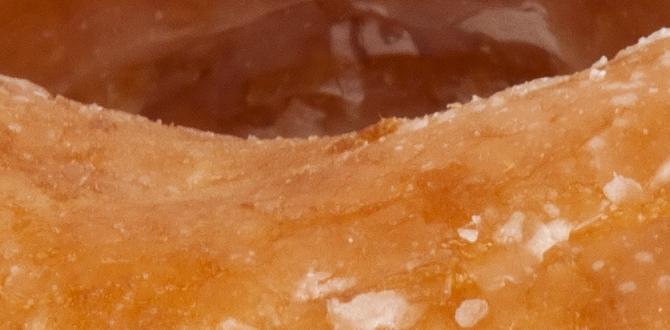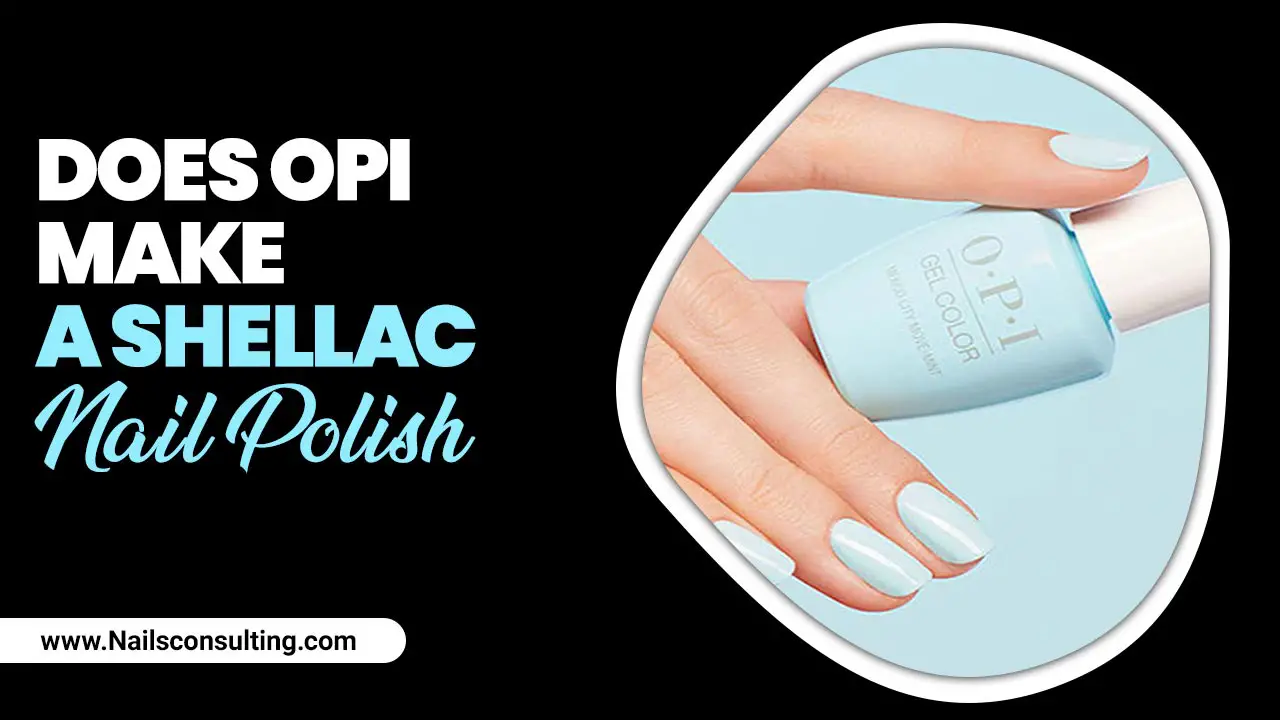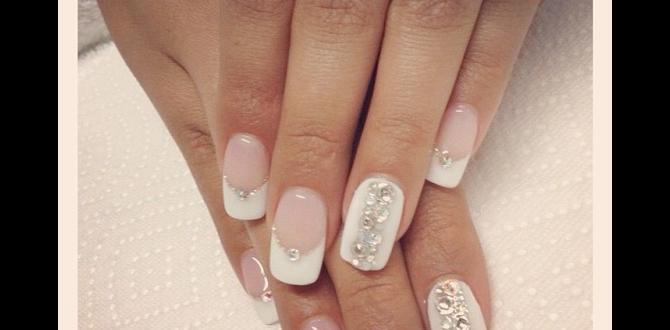Ocean wave nail art is a gorgeous and surprisingly simple way to bring the serene beauty of the sea to your fingertips. Learn essential techniques and genius tips to create stunning wave designs, perfect for beginners and seasoned nail art lovers alike!
Dreaming of the beach but stuck at home? Ocean wave nail art is your ticket to a mini-vacation for your nails! It’s a popular trend because it looks so chic and sophisticated, but here’s a secret: it’s totally achievable, even if you’re just starting out. Many people feel intimidated by nail art, thinking you need a steady hand and expensive tools. But don’t worry! We’re going to break down how to get those beautiful, flowing ocean waves onto your nails with easy-to-follow steps.
This guide will show you exactly what you need and how to use it. We’ll cover everything from picking the right colors to making your wave designs pop. Get ready to dive into the delightful world of ocean wave nail art and discover how easy it is to create a masterpiece right at home. Let’s get started on creating your own breathtaking ocean manicure!
Why Ocean Wave Nail Art is Genius & Essential
Ocean wave nail art isn’t just a fleeting trend; it’s a staple for a reason. Its enduring appeal lies in its versatility and the sense of calm and beauty it evokes. Whether you’re heading to the beach or just want a touch of coastal charm, these designs are perfect. They can be as simple or as intricate as you desire, making them adaptable to any skill level and personal style. Plus, the natural blend of blues, whites, and sandy tones feels inherently relaxing and uplifting.
The Essential Tools for Your Ocean Wave Nail Art Adventure
Before we dive into the fun part, let’s gather our supplies! Having the right tools makes all the difference in achieving smooth, professional-looking results. Don’t be overwhelmed; most of these are pretty standard nail art items you might already have, or they are easy to find.
Nail Polishes You’ll Need:
- Base Coat: Always start with a good base coat to protect your nails and help polish adhere.
- Top Coat: This seals your design and adds a beautiful shine.
- Blues: A few shades of blue are key! Think sky blue, deep ocean blue, and perhaps a vibrant turquoise.
- White: For frothy wave crests and highlights. Pure white or an off-white works great.
- Optional Neutrals: A sandy beige or a soft grey can add depth and grounding to your design.
Application Tools:
- Fine-Tipped Brush: This is your primary tool for drawing the wave lines. A detail brush or a striping brush with a fine tip is perfect. You can find these at most beauty supply stores or online.
- Dotting Tool: For creating small accents or dots if desired, though not strictly necessary for basic waves.
- Sponge (optional): For creating ombre or gradient effects for a softer look. A makeup sponge cut into small pieces works well.
- Nail Art Pen (alternative): Some people prefer nail art pens for their control and ease of use, especially for beginners.
- Clean-up Brush: A small, flat brush (like an old, clean eyeliner brush) dipped in nail polish remover is essential for tidying up any mistakes around the cuticle and edges.
Preparation Supplies:
- Nail Polish Remover: For correcting errors.
- Cotton Pads or Lint-Free Wipes: To apply remover.
- Cuticle Pusher/Orange Stick: To prep your nail beds.
Mastering the Basic Ocean Wave: A Step-by-Step Guide
Ready to create your first masterpiece? This guide focuses on a classic, simple ocean wave design that’s perfect for beginners. We’ll break it down into manageable steps.
Step 1: Prep Your Canvas
Clean nails are the best nails! Start by removing any old polish with nail polish remover. Gently push back your cuticles. If your nails are uneven, a quick buff can help create a smooth surface. Always apply a thin layer of base coat and let it dry completely. This protects your natural nail and ensures your colors apply smoothly.
Step 2: Lay Down Your Base Color
Choose a soft, muted base color for your nails. A pale sandy beige, a light sky blue, or even a sheer nude can serve as a beautiful foundation that lets your waves stand out. Apply one or two coats of your chosen base color and let it dry completely.
Step 3: Draw Your First Wave Line
Now for the fun part! Dip your fine-tipped brush into one of your blue polishes. For a classic wave, start by drawing a gentle, curved line across your nail. Think of drawing a soft “S” shape or a flowing curve. You can place this line near the bottom of the nail for a low tide look, or higher up for a more prominent wave.
Pro Tip: Don’t overthink the shape! Nature isn’t perfect. Embrace subtle wiggles and curves for a more organic look.
Step 4: Add Depth and Movement
Using a slightly darker shade of blue, draw another curved line parallel to your first one, but slightly overlapping or beside it. This creates the illusion of depth and movement, like layers of water. You can add a third line with an even darker blue or a touch of teal if you like, varying the thickness and curve.
Step 5: Create the Wave Crest and Froth
This is where your waves truly come to life! With your white polish and a clean, fine-tipped brush (or the tip of your detail brush), carefully paint a thin line along the top edge of your uppermost blue wave. This represents the foam or crest of the wave. You can make this line slightly uneven and wispy to mimic real sea foam. For extra dimension, add a few tiny white dots or dashes within the blue sections to represent smaller bubbles or sea spray.
Step 6: Refine and Clean Up
Now take your clean-up brush dipped in nail polish remover. Carefully trace around the edges of your design, removing any stray polish on your skin or cuticles. This step is crucial for a polished and professional finish. Clean lines make a huge difference!
Step 7: Seal the Deal with Top Coat
Once all the polish is completely dry, apply one or two layers of your favorite shiny top coat. This will smooth out any textures, protect your beautiful wave art from chipping, and give your nails a fantastic glossy finish. Let it dry thoroughly.
Advanced Techniques for Stunning Ocean Effects
Once you’ve mastered the basic wave, why not take your ocean-inspired nails to the next level? These techniques add more realism and visual interest to your designs.
Ombre Waves:
For a softer, blended water effect, try an ombre technique. After applying your base coat, use a makeup sponge to dab and blend different shades of blue onto the nail, creating a gradient from light to dark from cuticle to tip. Then, use your fine-tipped brush to draw white crests over the dried ombre base. This method is fantastic for mimicking the way light plays on water.
Adding Sand and Shell Accents:
To complete a beach scene, consider adding sandy elements. You can achieve this by applying a fine glitter polish in a “sandy” color (beige, gold, or light brown) to the very tip of your nail, creating a sandy shore. Alternatively, use a stamping plate with a sand texture and a beige polish. Tiny hand-painted dots in black or brown can represent small pebbles.
Seafoam Texture:
Want to make your seafoam look more realistic? Instead of just a line, try dabbing small amounts of white polish with a very fine brush or even a toothpick. You can also use a clear polish mixed with a tiny bit of white pigment and dab it on for a subtle, translucent foam effect. For an ultra-realistic, textured foam, consider using a white acrylic paint, which dries matte and can be layered.
Adding Subtle Movement with Glitter:
A touch of fine, iridescent glitter can mimic sunlight shimmering on the water. Apply a thin layer of clear polish and carefully dip a brush into a blue or silver iridescent glitter and lightly dust it over your wave design. This is best done before the final top coat and should be subtle – less is more!
Using Water Decals or Stickers:
For a quick and easy professional look, consider water decals or nail stickers featuring ocean waves. These are pre-designed and simply require soaking in water (for decals) or peeling and sticking. While they offer less creative control, they are a brilliant option for busy individuals or those who want a perfect design instantly. Make sure to seal them well with a good top coat.
Understanding the Color Palette: Creating Depth and Realism
The colors you choose are paramount to capturing the essence of the ocean. Think about the different hues you see when looking at water, from the shallow to the deep.
The Blues:
- Light Sky Blue: Perfect for the upper layers of water or as a base for a bright, airy feel.
- Aqua/Turquoise: Adds a tropical vibe and is great for mid-tone waves.
- Deep Navy/Royal Blue: Essential for creating shadows and the depths of the ocean.
- Teal: A beautiful blend of blue and green that offers a unique, oceanic feel.
The Whites and Neutrals:
- Pure White: The go-to for crisp, frothy wave crests and highlights.
- Off-White/Cream: Can provide a softer, more muted foam appearance.
- Sandy Beige/Nude: Excellent for nail beds, representing the shore or the seabed.
- Soft Greys: Can be used for cloudy skies or subtle water undertones.
Creating a Color Gradient:
To achieve a realistic gradient, start with your lightest blue at the cuticle area and blend darker blues as you move towards the tip. For ombre sponge application, start with the lightest shade, dab it on, then layer the medium blue over the tip, and then the darkest blue. Blending the edges with your sponge is key. A great resource for understanding color theory in art, which applies here too, is ColorHex’s Color Theory page.
Color Combinations to Try:
Here are a few ideas to get you started:
| Design Concept | Base Color | Wave Colors | Accent Colors |
|---|---|---|---|
| Tropical Lagoon | Light Aqua | Turquoise, Deep Blue | White foam, touch of pale yellow for sunlight |
| Stormy Seas | Deep Grey | Navy Blue, Dark Teal | White foam, subtle hints of stormy grey |
| Calm Horizon | Soft Sky Blue | Lighter Blue, White | White foam, pale sandy tip |
| Sun-Kissed Shore | Sandy Beige | Aqua, Pale Blue | White foam, glittery gold for sand |
Essential Nail Care Tips to Keep Your Art Looking Fresh
Beautiful nail art deserves healthy nails! Taking care of your nails will make your designs last longer and look even better.
- Moisturize: Keep your cuticles and hands hydrated with a good cuticle oil and hand cream. Dry cuticles can make even the best nail art look messy.
- Wear Gloves: When doing chores, especially those involving water or cleaning chemicals, wear rubber gloves to protect your manicure and your skin.
- Avoid Harsh Removers: If possible, opt for acetone-free nail polish removers, as acetone can be very drying to your nails and cuticles.
- Gentle Filing: When filing your nails, always file in one direction rather than sawing back and forth. This prevents splitting and weakening. For more insight into nail care, check out advice from dermatologists at the American Academy of Dermatology.
- Reapply Top Coat: Every 2-3 days, apply an extra layer of top coat to refresh your design and add extra protection.
Common Beginner Mistakes and How to Avoid Them
Even the most experienced nail artists make mistakes! Knowing what to look out for can save you a lot of frustration.
- Trying to Do Too Much Too Soon: Start with simple wave patterns before attempting complex scenes.
- Using Too Much Polish on the Brush: A little goes a long way! Too much polish can lead to thick, messy lines and flooding into the cuticle.
- Not Letting Layers Dry: Patience is key! Ensure each layer of polish and art is dry before adding the next, or you’ll end up with smudges.
- Skipping the Clean-Up Brush: This is a game-changer for neatness. A small brush with remover will instantly clean up mistakes.
- Forgetting the Base and Top Coat: These are non-negotiable for nail health and design longevity.
- Rushing the Final Top Coat: Make sure your art is 100% dry before applying the top coat. A quick swipe of a slightly damp brush can ruin your design. Wait at least 10-15 minutes after completing your art.
Frequently Asked Questions About Ocean Wave Nail Art
Q1: How do I get my wave lines smooth?
A1: Use a good quality fine-tipped nail art brush and a polish that isn’t too thick or too watery. Practice drawing smooth lines on a piece of paper first to get a feel for the polish flow. Keep your strokes deliberate and steady.
Q2: Can I do ocean wave nail art on short nails?
A2: Absolutely! You might need to simplify the design, using fewer lines or smaller waves, but the effect is just as beautiful. Focus on one or two gentle curves rather than multiple complex layers.
Q3: What if I don’t have a fine-tipped brush?
A3: You can use the edge of a toothpick, a straightened-out bobby pin, or even a very fine-tipped eyeliner brush that you dedicate to nail art. Nail art pens are also a great alternative for beginners.
Q4: How long does ocean wave nail art typically last?
A4: With a good base coat, careful application, and a quality top coat (reapplied every few days), your ocean wave nail art can last anywhere from 5 to 10 days. Proper nail care helps extend its life.
Q5: Can I combine different shades of blue in one wave?
A5: Yes! This is a great way to add depth and realism. You can layer different blues or blend them using a sponge for a more dynamic water effect. Just ensure each layer is dry before adding the next.
Q6: My white foam looks too stark. How can I make it softer?
A6: Try using an off-white or cream polish for a softer look. You can also apply a very thin layer of clear polish over the white and gently dab with a clean brush to blur the edges slightly for a more diffused foam appearance.
Conclusion
There you have it – your complete guide to creating stunning ocean wave nail art! We’ve covered everything from the essential tools and step-by-step techniques to advanced tips for adding depth and realism. Remember, nail art is all about creativity and self-expression. Don’t be afraid to experiment with colors, shapes, and textures. Whether you’re aiming for a subtle whisper of the ocean or a bold, vibrant seascape, these techniques will help you achieve beautiful results.
The beauty of ocean wave nail art lies in its ability to transport you to a place of calm and beauty with every glance at your hands. It’s a reminder of nature’s power and tranquility, right at your fingertips. So, gather your polishes, grab your brush, and dive into creating your own serene ocean paradise. You’ve got this, and the results will be absolutely breathtaking! Happy polishing!




